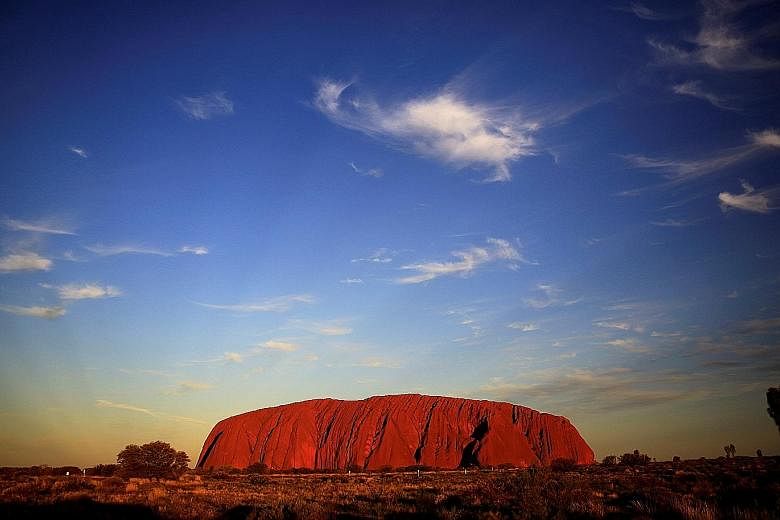Tourists visiting Australia's Uluru, or Ayers Rock, have long faced an ethical dilemma: to climb or not to climb?
But soon, this will no longer be a question for the 300,000 visitors who travel each year to the 348m high rock in the remote centre of the country. From October next year, climbing will be banned after the local administrative authority finally agreed late last year to the requests of local Aborigines, who regard it as a sacred site.
Already a subscriber? Log in
Read the full story and more at $9.90/month
Get exclusive reports and insights with more than 500 subscriber-only articles every month
ST One Digital
$9.90/month
No contract
ST app access on 1 mobile device
Unlock these benefits
All subscriber-only content on ST app and straitstimes.com
Easy access any time via ST app on 1 mobile device
E-paper with 2-week archive so you won't miss out on content that matters to you

